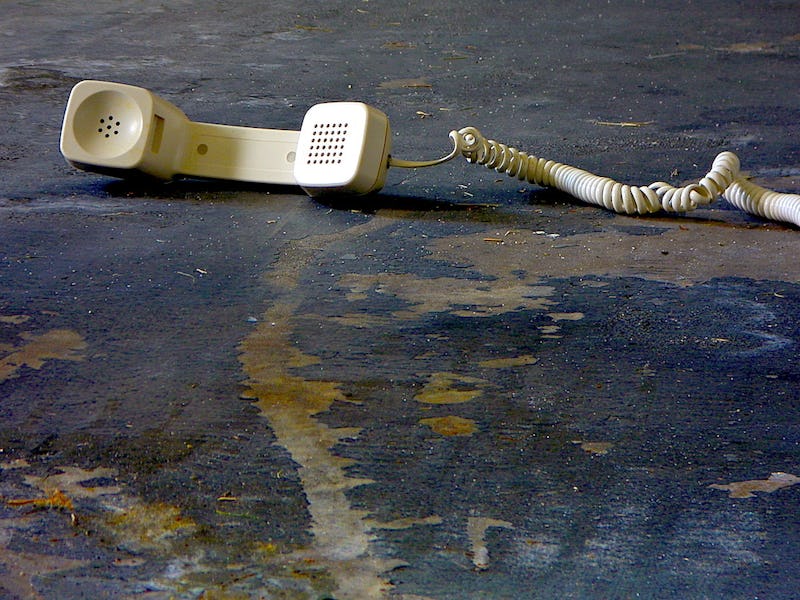Landlines Will Disappear Before 2030 Because Economics
It's actually pretty impressive they've hung on so long.

Landlines have had a surprising half-life, but it’s starting to feel like their continued existence is an affront to progress, an admission that we’re not all in this thing together. Sure, they’re simple and reliable in case of emergency, but should that be enough? Is it enough? The answer is clearly no. It’s only a matter of time before we cut ourselves free of cords. Here’s why the process is taking so damn long.
Usefulness Isn’t Binary
Landlines are familiar and simple. They’re dumb and there’s some sentimental beauty to that. Landlines are a product of the more innocent time before your phone kept watch on you, shoved “notifications” into your pocket, and profiteered app by app. Still, most people don’t use landlines in a nostalgic way. The sentiment is real, but minor. People fundamentally use old-fashioned phones because they’re useful. The fact that they aren’t very useful is overshadowed by the fact that they have utility. We’re reluctant to be rid of things that work.
Simplicity, epitomized.
But the real reason, the main reason people still have landlines collecting dust in their homes, is that they think it makes them more secure in the face of an emergency. Calls made from landlines to emergency services include addresses in their identification tags, whereas cell phones only initially provide the nearest cell tower. In natural disasters and emergencies, there’s a good chance that your old-fashioned, corded, copper-wired landline will continue to function. (Cordless phones still require power, and therefore will fail.) There’s a chance that your cell phone will not continue to function.
The Cycle is Vicious
The fact that landlines are dumb is a double-edged sword: Sure, their simplicity is attractive, but their function is narrowly defined. Landlines don’t provide access to anything other than what’s on the other end of the line. This is why they seem comical to younger consumers unused to gadgets with such limited utility. And in that issue we find the economic problem: Landlines aren’t worth it and are getting less worth it daily. Supply and demand affect cost. The chart below illustrates the relative increase in cost of landlines as opposed to the cost of cell phones. More for less is not a great business model.
Consumer price indexes for landline and wireless telephone services, Dec. 2009 - Sep. 2015.
Habits Aren’t Innate
The CDC does a biannual health survey, and part of the study, for some time, has focused on the use of landlines as opposed to that of cell phones. Already, almost half of all adults and over half of all children sport cell phones exclusively.
Below is a compilation of their data and a trendline showing what will happen if current trends continue. Each line follows the percentage of “households” (meaning any respondent to the survey who lived in a home, either alone, with friends, or with family) who have a landline only (red), a landline as well as at least one wireless phone (blue), and wireless only (gold). A “wireless phone,” in the study, means a cell phone.
Actual data points shown in full color, trendlines in half-color.
Inevitabilities Are a Thing
The trendlines show that in just over five years, the landline will be gone — though the truth is more complicated than that. When demand gets very low, they’ll cease to be an option for mass consumption and become a boutique option. Still, they’ll effectively have a zero percent share of the market. Beyond that it’s a matter of generations until they’re both gone and forgotten.